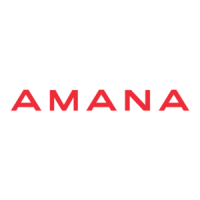6
- printing inks
- chlorinated waxes or cleaners
- paint removers
- varnishes
- water softening chemicals
- hydrochloric acid
- cements and glues
-deicing salts or chemicals
- halogen type refrigerants
- masonry acid washing materials
• Isolate a non-direct vent furnace if it is installed
non-direct vent
the enclosed non-direct vent furnace has an adequate
uncontaminated room or from outdoors. Refer to the
Combustion and Ventilation Air Requirements for
details.
• If the furnace is used in connection with a cooling coil
unit, install the furnace upstream or in parallel with the
cooling coil unit. Premature heat exchanger failure
will result if the cooling unit is placed ahead of the
furnace.
•
Example: a “C” width coil may be installed with
a “B” width furnace.
furnace must face the same direction.
• If the furnace is installed in a residential garage,
source are located not less than 18 inches (457 mm)
• If the furnace is installed horizontally, ensure the
side of the furnace.
•
fuel.
•
the furnace heat exchanger.
• Counterow Installation over a noncombustible oor.
Before setting the furnace over the plenum opening,
ensure the surface around the opening is smooth
caulking compound or cement grout.
• Centrally locate the furnace with respect to the
• Ensure the temperature of the return air entering the
is heating.
•
outdoors through a proper venting system. Special
Refer to Vent/Flue Pipe and Combustion Air Pipe
-Termination Locations for appropriate termination
locations and to determine if the piping system from
the guidelines given.
location of the furnace.
•
to the drain. Do not locate the furnace or its
protection. Refer to Condensate Drain Lines and Trap
for further details.
•
Combustion and Ventilation Air Requirements.
•
Horizontal
Applications and Considerations for leveling of
horizontal furnaces.
•
wood.
•
instructions for installation details.
•
- permanent wave solutions
- cleaning solutions (such as perchloroethylene)

